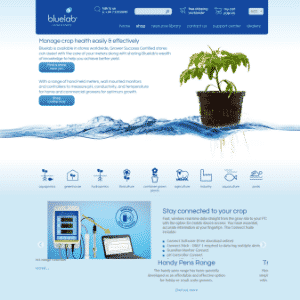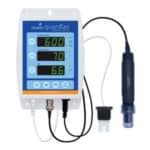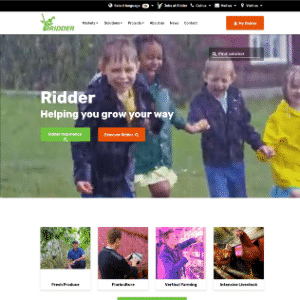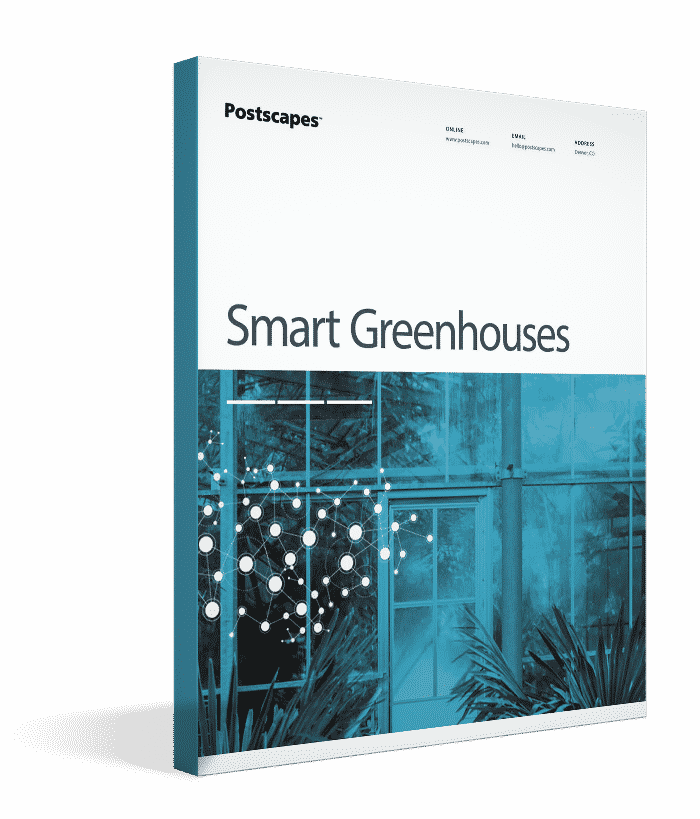Automated Greenhouse Irrigation & Fertigation
Overview
Careful management of water and nutrients combined
with recycling the drain water in your greenhouse will
strengthen your business both in the short and long
term because it will help you to:
• Reduce total fertilizer input
• Save costs
• Optimize the growth of your crop
• Secure the availability of sufficient and clean
irrigation water
• Secure the availability of a sufficiently wide range
of plant protection products
• Protect the environment
• Comply with legislation
Closed hydroponic systems help protect the environment
by minimizing fertilizer emission and conserving
surface water quality
Overhead Systems
- fixed installations, center pivots, traveling guns, and portable sprinklers, boom, misting
Micro/Trickle/Drip Systems
Ebb-and-flood floor systems and capillary mats both water from the bottom up instead of overhead. C
Mat
Dosing: dilute tanks and in-line injection.
Implementing this irrigation approach is fairly simple in many greenhouses. If you have an advanced environmental control system, you probably can already integrate soil moisture sensors into this system. The next step would be to monitor substrate water content data to see how your current irrigation practices affect substrate water content. With that information at your fingertips, you can probably see how you could do things differently. And once you are comfortable with the data, you can take the next step and have the environmental controller trigger irrigation automatically, based on substrate water content readings.
The simplest form of automation is a time clock that determines how often and how long the irrigation system is on. This type of control is often used for propagation mist systems. The grower can change the interval and duration: For example, more frequent misting during the early stages of rooting cuttings and less frequent misting to harden off cuttings before transplant. Mist systems may use a clock setting or a solar sensor to reduce mist frequency at night. Outdoor timer systems used for crops like garden mums may have a rain sensor that overrides the time clock.
Sensor-controlled irrigation can be used to expose plants to a controlled water deficit. This can be used to reduce the stem elongation rate when plants get too tall.
Irrigation management systems based on environmental measurements offer much improved control of supply in relation to demand. In the aerial environment, light accumulation and vapor pressure deficit (VPD) are all related to water demand, and both are used for irrigation control systems. Of these, VPD is more sophisticated, as temperature and relative humidity measurements are integrated over time to determine the evapo-transpiration potential.
Either light or VPD accumulation measurements are used to develop predictive crop models. Based on experience, the grower determines a relationship between measurements and crop demand. The irrigation controller is programmed so irrigation will occur when the measured value reaches a certain level.
In systems using aerial environment measurements, one sensor or group of sensors can be used to control multiple irrigation zones as long as they share the same environment. The sensors are generally reliable and useful for other aspects of environmental management. If the greenhouse has an environmental computer to manage heating and cooling, it should already have light and humidity sensors that could be used to control irrigation based on VPD or solar accumulation.
Irrigation management systems may also use soil moisture measurements to estimate the supply of water. When the growing medium is irrigated to its effective water-holding capacity, the subsequent change in the weight of the planted container is largely due to the loss of water from the medium. Some growers use portable balances to weigh representative pots. This process can be automated by using electronic strain gauges to measure weight continuously.
optimize water management and nutrient levels. This process of managing both is often referred to as ‘fertigation’. When fertigation control is also integrated with your environmental control system it can be easier to monitor and manage everything from a single interface.
Drip systems, ebb and flood benches, overhead micro-sprays and sprinklers, automated booms: Irrigation options and their importance to the health and well being of crops can be daunting.
Create a system that meets the needs of the plants and does it cost effectively and uniformly," Lieth said. "If you don't do precise irrigation
Growers rotating different crop types through an irrigation space during the growing season or growing several different crops in the same space at the same time need an irrigation system that can adjust easily.
Most of the producers paying attention to efficiencies and productivity are fertigating," Lieth said. "They are not just delivering water. They are delivering water and nutrients at the same time. Even varying the concentration of the nutrients in the water dynamically depending on crop." Lieth pointed out that if growers do their fertilization through this kind of system, they bypass the extra labor involved with the fertilizing process. "The key is really that it's simply more uniform to do it through an automated system," he said.
"There will be better plant nutrition in the pot, it will prevent water stress and other stresses that inhibit plant growth, and it will help prevent the spread of diseases."
Computers make it possible to more accurately match the needs of your crop while safeguarding against the many things that can potentially go wrong with your irrigation system. They can warn you if a pump has run dry or if a pipe has broken. This is accomplished by using a strategic combination of system monitoring sensors and advanced watering decision logic. You can use any combination of time, sensor feedback, and sophisticated anticipatory models such as light accumulation or evapotranspiration. An added benefit is that all irrigation activities are logged and recorded so you have a complete record of what is being watered and when.
With integrated irrigation control you have all of the resources of the control system at your disposal for implementing watering strategies. This can include information from the weather station as well as zone temperatures, humidity, and light levels. It is possible to create highly dynamic watering decisions that are as sensitive to changes in the environment as are the plants. Integrated control provides many additional capabilities and benefits. Here are some of them:
Automated capacity management. This is like ‘air traffic control’ for your irrigation system. With capacity management, any zone can independently request water at any time. You do not need to worry about how many zones can be watered at once. The control system manages all watering execution to ensure optimum system pressures and flow rates are maintained at all times. If too many zones request water at the same time the system efficiently queues them and services each in turn as capacity becomes available.
Intelligent feedback control. Feedback information from moisture sensors, scales, etc. can safely be used as the basis for watering because the control system can help protect your crop and irrigation system from some of their vulnerabilities. This includes automatic failure detection, maximum and minimum application limits, and comprehensive alarm monitoring when problems are detected.
Watering confirmation. Often the best use for a moisture sensor is to confirm that water has actually reached its intended destination. Feedback sensors, and in some cases remote imaging, can be used to confirm that watering applications have actually occurred.
Anticipatory control. Just because plants use water at variable rates doesn’t mean they aren’t predictable. By accumulating and evaluating the factors that influence plant water demand it is possible to create dynamic watering schedules that are very accurate and are much less susceptible to failures than strategies that rely solely on point source feedback sensors.
Nutrient control integration and multiple feed selection. Computerized control makes it possible to select from a variety of feeds available on your system. For example you might want to use a standard feed recipe by default, but switch to plain water or a half-strength feed at times of high demand. Alternatively, you could specify 20-10-20 for four out of every five waterings, and calcium nitrate every fifth watering.
Water temperature control. Automatic controls for equipment used to temper water for cold sensitive crops.
Variable vol-ume application. In some situations you may want to maintain fixed watering frequencies while applying more or less volume depending on the current conditions.
Pulsed waterings. To prevent excessive runoff and achieve more uniform wetting of dry soils you can specify the total volume to be applied as a series of pulses, allowing for sufficient soak-in time in between.
Measurement of runoff volume. This information can be used for management purposes and as the basis for manual or fully automated adjustments to watering volumes, frequencies, and chemical strength.
EC and pH management. Sensors located in either the media or sampling the leachate can be used to modify watering volumes, fertilizer concentrations, and pH.
Recapture, treatment, bulk storage and recycling. With computerized irrigation control you can manage all of the peripheral collection, distribution, and treatment equipment needed for efficient recycling
New sensor-based systems allow for soils or substrates to be kept at a specified soil moisture level automatically, regardless of changing conditions.
Components
Flow Meter
Environmental Sensors
Plant / Soil Sensors
Drip
Misting & Sprinkler
Pumps and Valves
Fertilizer Injectors
Controllers
Mats
https://www.getbluelab.com/shop/By+Category/Controllers+%26+Dosers/Pro-Controller.html
https://www.arguscontrols.com/system/multi-feed-nutrient-injection/
Case Studies
Below we look at experiments showing how sensors based irrigation management can improve profits, reduce water and improve quality of crops.

Gardenia Plants
Dearing, GA
Size: 20,000 Sq Ft unheated greenhouse
Experiment: A single soil moisture was placed in a container and irrigation application was triggered when substrate water content dropped below 0.20 m3 m–3
Products: Dynamax Moisture Clik IL200-MC and SM200 soil moisture sensor
Results: Controlling irrigation using data from moisture sensors led to substantial reductions in both production time and crop losses: The weighted average time from planting to sale was over one-third lower while crop losses were reduced by 50%. Annualized profit under the wireless sensor system was over 1.5 times more than under the nursery’s standard practice, with the bulk of the increase in profit due to the reduction in production time.

Butterhead Lettuce
Mola di Bari, Italy
Products: EC sensor from Delta-T Devices and SDM-CD16S Datalogger from Campbell Scientific
Results: Sensor controlled irrigation with a set-point above the EAW limit (‘Θ = 0.4’ treatment) had similar plant fresh weight and quality as timer-controlled irrigation, but used less irrigation volume. Precision irrigation based on measurements eliminated leaching while improving the quality of soil less-grown lettuce.

Snapdragon
Results: Sensor-based irrigation was associated with a 62 % ($65,173 or $434,487 ha−1) increase in revenue and a 65 % ($35,327 or $325,513 ha−1) increase in profit per year. Also associated with increases in the quality and the number of stems harvested per crop and the time to first and last harvest were reduced. Production time per crop was decreased allowing for 2.5 additional crops per year.
Additional
- Improving Greenhouse Irrigation through a Sensor-based Automated Decision Support System - Scott Henderson 2017 (PDF)
- Sensor-based automated irrigation use in specialty crop production and root disease suppression - William drexel Wheeler 2016
- Irrigation Management of Greenhouse Tomato and Cucumber Using Tensiometer: Effects on Yield, Quality and Water Use - 2015
- Integrating Soil Moisture and Other Sensors for Precision Irrigation - Marc van Iersel 2012
Products

Bluelab Guardian Monitor Connect Inline
Price: $440
Results: Allow you to remotely monitor your nutrient solution pH, conductivity, and temperature in your irrigation line
Analytics: Yes
Alerts: Yes, Email alerts
Companies
Who are some of the key vendors offering smart greenhouse irrigation systems and controllers?
Additional
Additional Resources
General Research
- SCRI-MINDS









